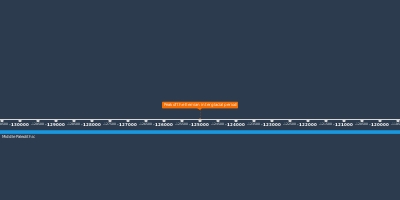1h 1min, jan 1, 150000 y BC - Khosian Breakup
Description:
Khoisan (/ˈkɔɪsɑːn/), or according to the contemporary Khoekhoegowab orthography Khoe-Sān (pronounced: [kxʰoesaːn]), is a catch-all term for the "non-Bantu" indigenous peoples of Southern Africa, combining the Khoekhoen (formerly "Khoikhoi") and the Sān or Sākhoen (also, in Afrikaans: Boesmans, or in English: Bushmen,[3] after Dutch Boschjesmens; and Saake in the Nǁng language).Khoekhoen, specifically, were formerly known as “Hottentots”[4], which was a derogatory onomatopoeic term (from Dutch hot-en-tot) referring to the click consonants prevalent in the Khoekhoe languages, as they are in all the languages grouped under "Khoesān".
In the contemporary era, Sān are popularly thought of as foragers in the Kalahari Desert and regions of Botswana, Namibia, Angola, Zambia, Zimbabwe, Lesotho and South Africa. The word sān is from the Khoekhoe language and simply refers, often in a derogatory manner, to foragers ("those who pick things up from the ground") who do not own livestock. As such it was used in reference to all hunter-gatherer populations of the Southern African region who Khoekhoe-speaking communities came into contact with, and was largely a term referring to a lifestyle, distinct from a pastoralist or agriculturalist one, not any particular ethnicity. While there are attendant cosmologies and languages associated with such a radical lifestyle, the term is thus essentially an economic designator, rather than a cultural or ethnic one.
On the other hand, however, Khoekhoen is considered to have ethnic meaning, as it refers to a number of historical populations of speakers of closely related languages that are considered to be the historical pastoralist communities in the South African Cape region, through to Namibia, where Khoekhoe populations of Nama and Damara people are prevalent ethnicities.
These Khoekhoe nations and Sān are grouped under the single term Khoesān as representing the indigenous substrate population of Southern Africa prior to the hypothesized Bantu expansion reaching the area, roughly between 1,500–2,000 years ago.
Many Khoesān peoples are the direct descendants of a very early dispersal of anatomically modern humans to Southern Africa, before 150,000 years ago. Their languages show a vague typological similarity, largely confined to the prevalence of click consonants, and they are not verifiably derived from a common proto-language, but are today split into at least three separate and unrelated language families (Khoe-Kwadi, !Ui-Taa and Kx'a). It has been suggested that the Khoekhoeǁaen (Khoekhoe peoples) may represent Late Stone Age arrivals to Southern Africa, possibly displaced by Bantu immigration.[5]
The compound term Khoisan / Khoesān is a modern anthropological convention, in use since the early-to-mid 20th century. Khoisan is a coinage by Leonhard Schulze in the 1920s and popularised by Isaac Schapera.[6] It enters wider usage from the 1960s, based on the proposal of a "Khoisan" language family by Joseph Greenberg.
Khoesān peoples were historically also grouped as Cape Blacks or Western Cape Blacks to distinguish them from the Niger-Congo-speaking "Bantoid" or "Congoid" blacks of the other parts of sub-Saharan Africa. Derived from this is the term Capoid used in 20th century anthropological literature. An equivalent term derived from the compound Khoisan is Khoisanid, in use primarily in genetic genealogy.[7][8]
The term Khoisan (also spelled KhoiSan, Khoi-San, Khoe-San[9]) has also been introduced in South African usage as a self-designation after the end of Apartheid, in the late 1990s. Since the 2010s, there has been a "Khoisan activist" movement demanding recognition and land rights from the Bantu majority.
Homo sapiens (anatomically modern humans) are assumed to have emerged about 300,000 years ago based on thermoluminescence dating of artefacts from Jebel Irhoud, Morocco, published in 2017.[20] Previously, the Omo remains, excavated between 1967 and 1974 in Omo National Park, Ethiopia, and dated to 200,000 years ago, were long held to be the oldest known fossils of anatomically modern humans.[21]
Early modern humans expanded to Western Eurasia, Central, Western and Southern Africa from the time of their emergence. While early expansions to Eurasia appear not to have persisted,[22][18] expansions to Southern and Central Africa resulted in the deepest temporal divergence in living human populations. Early modern human expansion in sub-Saharan Africa appears to contribute to the end of late Acheulean (Fauresmith) industries at about 130,000 years ago, although very late coexistence of archaic and early modern humans, until as late as 12,000 years ago, has been argued for West Africa in particular.[23]
The ancestors of the modern Khoi-San expanded to Southern Africa before 150,000 years ago, possibly as early as before 260,000 years ago,[24] so that by the beginning of the MIS 5 "megadrought", 130,000 years ago, there were two ancestral population clusters in Africa, bearers of mt-DNA haplogroup L0 in southern Africa, ancestral to the Khoi-San, and bearers of haplogroup L1-6 in central/eastern Africa, ancestral to everyone else. There was a significant back-migration of bearers of L0 towards eastern Africa between 120 and 75 kya.[25]
Expansion to Central Africa, by the ancestors of the Central African forager populations (African Pygmies) most likely took place before 130,000 years ago, and certainly before 60,000 years ago.[26]
The situation in West Africa is difficult to interpret due to a sparsity of fossil evidence. Homo sapiens seems to have reached the western Sahelian zone by 130 kya, while tropical West African sites associated with H. sapiens are known only from after 130 kya. Unlike elsewhere in Africa, archaic MSA sites appear to persist until very late, down to the Holocene boundary (12 kya), pointing to the possibility of late survival of archaic humans, and late hybridization with H. sapiens in West Africa.
Added to timeline:
Date:
1h 1min, jan 1, 150000 y BC
Now
~ 152126 years ago
